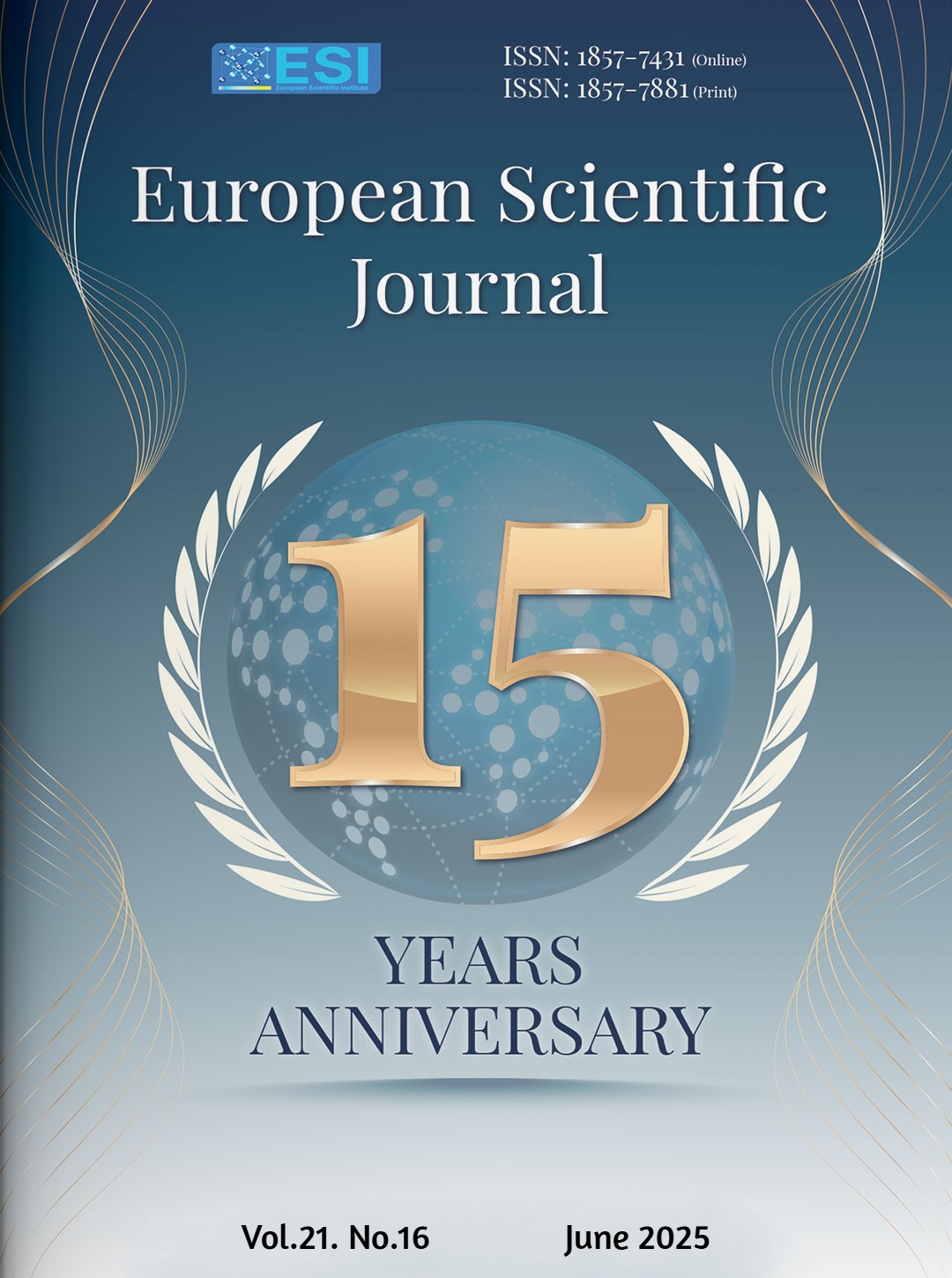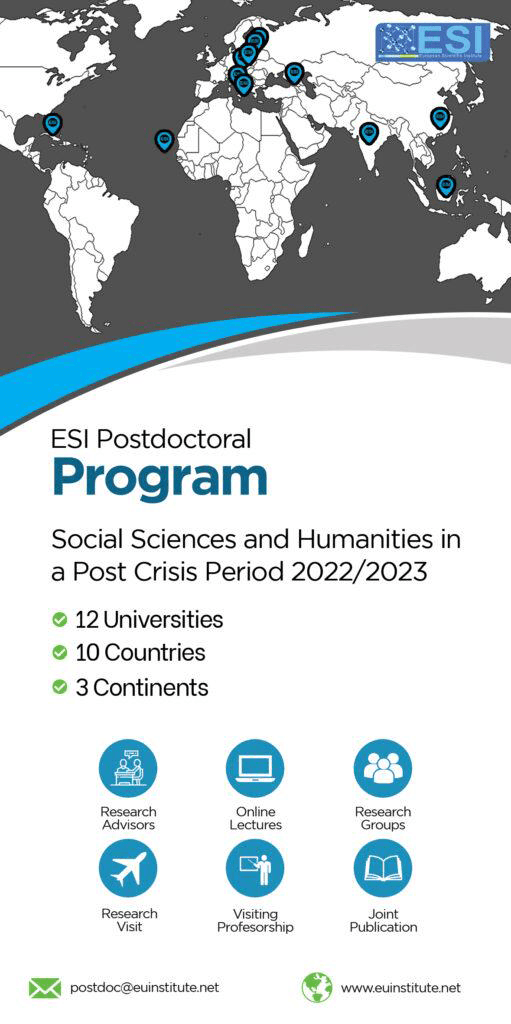Integrated Marketing Communication Mix Elements and Adoption of a Sports Culture: The Case of Academic Staff Members of Chartered Public Universities in Nairobi City County, Kenya
Abstract
Adoption of a sports culture occurs when people make sports to be part of their lives. This study investigated the mediating role of lifestyle habits and the moderating role of socio-ecological factors in the relationship between the integrated marketing communication mix elements and adoption of a sports culture among academic staff members of chartered public universities in Nairobi City County, Kenya. The inquiry was based on the theory of planned behaviour (TPB), communication theory, Attention-Interest-Desire-Action (AIDA) model, and the diffusion of innovation theory. The realism paradigm and a descriptive survey research design were used for the study. The researchers sampled 372 academic staff members from five chartered public universities based in Nairobi City County using stratified random sampling. Binomial logistic regression was used in the data analysis since the dependent variable was categorical in nature. The study established that integrated marketing communication mix elements predicted the adoption of a sports culture, with lifestyle habits mediating and socio-ecological factors moderating the relationship between integrated marketing communication mix elements and adoption of a sports culture by the academic staff members of the identified institutions. The study recommends that managers of health-promoting sports clubs should consider the integrated marketing communication mix elements, lifestyle habits, and socio-ecological factors when designing their communication programs.
Downloads
Metrics
PlumX Statistics
References
2. Bae, U., Won, D., Lee, C., & Pack, S. (2020). Adolescent participation in new sports: Extended theory of planned behavior. Journal of Physical Education and Sport (JPES), 20(3), 2246-2252. Available at: https://efsupit.ro/images/stories/iulie2020/Art%20301.pdf (Accessed: 2 June 2025).
3. Dacay, N., Rañon, J., & Culajara, C. (2024). Examining the health-promoting lifestyle of college students: A quantitative analysis. American Journal of Human Psychology, 2(1), 93-103. https://doi.org/10.54536/ajhp.v2i1.2823
4. Guthold, R., Stevens, G., Riley, L., & Bull, F. (2018). Worldwide trends in insufficient physical activity from 2001 to 2016: A pooled analysis of 358 population-based surveys with 1.9 million participants. The Lancet Global Health, 6(10), e1077-e1086. DOI: 10.1016/S2214-109X(18)30357-7
5. Hernández-Beltrán, V., Espada, M., Santos, F., Ferreira, C., & Gamonales, J. (2023). Documents publication evolution (1990–2022) related to physical activity and healthy habits: A bibliometric review. Healthcare, 11(12), 1669. DOI: 10.3390/healthcare11121669
6. Hu, D., Zhou, S., Crowley-McHattan, Z., & Liu, Z. (2021). Factors that influence participation in physical activity in school-aged children and adolescents: A systematic review from the social ecological model perspective. International Journal of Environmental Research and Public Health, 18(6), 3147. https://doi.org/10.3390/ijerph18063147. DOI: 10.3390/ijerph18063147
7. Kim, M., & Kim, J. (2018). Linking marketing mix elements to passion-driven behavior toward a brand: Evidence from the food service industry. International Journal of Contemporary Hospitality Management, 30(10), 3040-3058. DOI: 10.1108/IJCHM-10-2017-0630
8. Lavidge, R., & Steiner, G. (1961). A model for predictive measurements of advertising effectiveness. Journal of Marketing, 25(6), 59-62. https://doi.org/10.1177/002224296102500611
9. Manika, D., Gregory-Smith, D., Wells, V., & Trombetti, E. (2019). Student SwitchOff!’: How do university students respond to a corporate-sponsored pro- environmental social marketing campaign? Studies in Higher Education, 44(9), 1691-706. DOI: 10.1080/03075079.2018.1474456
10. Matilda, M., Kamau, J., Mwangi, F., Wanderi, M., & Onyango, E. (2020). Status of participation in physical activity by employees in Kenyan universities at Onsite Fitness Centers in Kenya. African Journal of Education, Science and Technology, 6(1), 122-133. https://doi.org/10.2022/ajest.v6i1.470
11. McLeroy, K. R., Bibeau, D., Steckler, A., & Glanz, K. (1988). An ecological perspective on health promotion programs. Health Education Quarterly, 15(4), 351-377. DOI: 10.1177/109019818801500401
12. Mwangi, F., & Rintaugu, E. (2017). Physical activity and health related physical fitness attributes of staff members in a Kenyan public university. International Journal of Sports Science 2017, 7(2), 81-86. DOI: 10.5923/j.sports.20170702.09
13. Nassè, T. (2023). Defining culture in a marketing management perspective. International Journal of Management & Entrepreneurship Research, 5(12), 907-914. DOI: 10.51594/ijmer.v5i12.625
14. Park, S., Lee, S., Woo, S., Webster-Dekker, K., Chen, W., Veliz, P., & Larson, J. L. (2024). Sedentary behaviours and physical activity of the working population measured by accelerometery: A systematic review and meta-analysis. BMC Public Health, 24(1), 2123. DOI: 10.1186/s12889-024-19449-y
15. Rakic, B., & Rakic, M. (2015). The influence of integrated marketing communication on the process of creating a healthy lifestyle. Revista Romana de Bioetica, 13(3), 1-15. Available at: https://www.researchgate.net/publication/317057623_The_influence_of_integrated_marketing_communications_on_the_process_of_creating_a_healthy_lifestyle (Accessed: 6 June 2025)
16. Rasmussen, K., Dufur, M., Cope, M., & Pierce, H. (2021). Gender marginalization in sports participation through advertising: The case of Nike. International Journal of Environmental Research and Public Health, 18(15), 7759. DOI: 10.3390/ijerph18157759
17. Rogers, E. (1962). Diffusion of innovations. New York: Free Press. Available at: https://teddykw2.wordpress.com/wp-content/uploads/2012/07/everett-m-rogers-diffusion-of-innovations.pdf (Accessed: 2 June 2025).
18. Roychowdhury, D. (2020). Using physical activity to enhance health outcomes across the life span. Journal of Functional Morphology and Kinesiology, 5(2), 1-13. DOI: 10.3390/jfmk5010002
19. Sallis, J. F., Owen, N., & Fisher, E. B. (2024). Ecological models of health behavior. In K. Glanz, B. K. Rimer, & K. Viswanath (Eds.), Health behavior and health education: Theory, research, and practice (pp. 465–486). San Francisco, CA: Jossey-Bass. Available at: https://www.researchgate.net/publication/43508113_Ecological_Models_of_Health_Behavior (Accessed: 2 June 2025).
20. Saunders, M., Lewis, P., & Thornhill, A. (2023). Research methods for business students. London: Pearson Education Limited. Available at: https://www.google.co.ke/books/edition/Research_Methods_for_Business_Students/zoy1EAAAQBAJ?hl=en (Accessed: 2 June 2025).
21. Shannon, C., & Weaver, W. (1949). The mathematical theory of communication. Urbana: The University of Illinois Press. Available at: https://www.google.co.ke/books/edition/_/8hXvAAAAMAAJ?hl=en&sa=X&ved=2ahUKEwjMmtG1ldONAxUwUKQEHZNBDP0Qre8FegQIExAJ (Accessed: 2 June 2025).
22. Simiyu, W. (2019). Africa at the football World Cup final tournament, 1934-2018: Defining moments and memories on the field. Soccer and Society, 20(7-8), 973-985. https://doi.org/10.1080/14660970.2019.1680497
23. Strong, E. (1925). The psychology of selling and advertising. New York: McGraw-Hill. Available at: https://www.google.co.ke/books/edition/The_Psychology_of_Selling_and_Advertisin/7ksEAAAAMAAJ?hl=en&gbpv=1&dq=Strong,+E.+(1925).+The+psychology+of+selling+and+advertising&printsec=frontcover (Accessed: 2 June 2025).
24. Thormann, T. & Wicker, P. (2021). Determinants of pro-environmental behavior among voluntary sport club members. German Journal of Exercise and Sport Research, 51(2), 29-38. DOI: 10.1007/s12662-020-00700-8
25. World Health Organization (WHO) (2004). Global strategy on diet, physical activity and health. Available at: https://www.who.int/publications/i/item/9241592222 (Accessed: 2 June 2025).
26. World Health Organization (WHO) (2022). Noncommunicable diseases. Geneva: World Health Organization. Available at: https://www.who.int/news-room/fact-sheets/detail/noncommunicable-diseases (Accessed: 2 June 2025).
27. Yamane, T. (1967): Statistics: An introductory analysis. Japan: Harper and Row. Available at: https://www.google.co.ke/books/edition/Statistics_an_Introductory_Analysis/dX-HBsrLHMIC?hl=en&gbpv=1&bsq=Yamane,+T.+(1967):+Statistics:+An+introductory+analysis.&dq=Yamane,+T.+(1967):+Statistics:+An+introductory+analysis.&printsec=frontcover (Accessed: 2 June 2025).
Copyright (c) 2025 Benjamin Mwanzia Mulili, Samuel Mwangi Maina, Reuben Njuguna Kinyuru

This work is licensed under a Creative Commons Attribution 4.0 International License.








